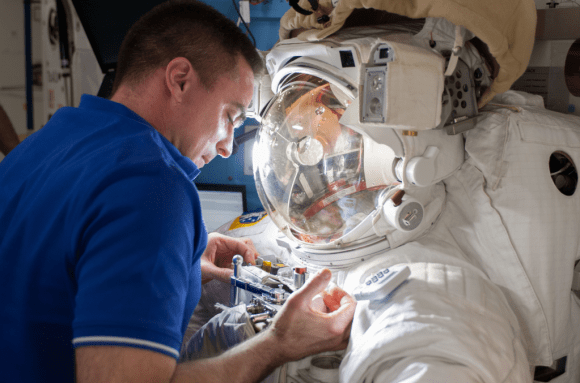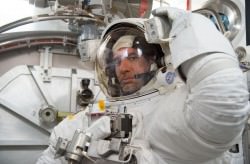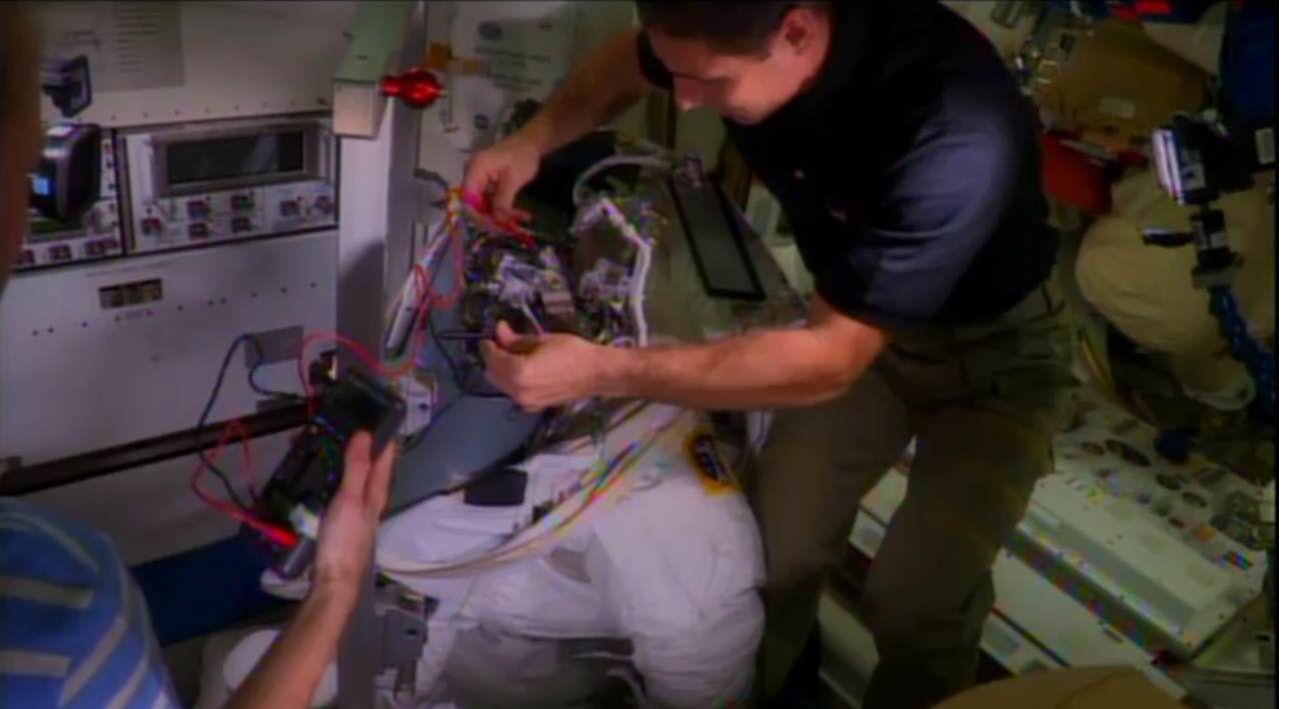Here’s the latest attempt to hunt down the water leak that aborted Luca Parmitano’s spacewalk in July: two astronauts aboard the International Space Station removed and replaced a fan pump and water separator inside the spacesuit earlier this week.
All spacewalks with NASA suits are on hold while the agency investigates the leak, and they have been trying mightily. In late July, then on-station NASA astronaut Chris Cassidy demonstrated how the pool of water spread within the helmet (as you can see in these YouTube videos).
This week, on-orbit NASA astronauts Mike Hopkins and Karen Nyberg delved further. While the astronauts are trained before their missions on some suit repairs, this particular type was not something that was covered before they left Earth. After Mission Control walked them through what to do, the astronauts proceeded cautiously as they did the work, NASA said.
“Our engineering teams have identified several different components of the suit, designing a big fault tree, and this is just one of the components that we think could have contributed to the leak in the suit,” said Alex Kanelakos, an extra-vehicular activity flight controller and astronaut instructor, in a new YouTube video.
“Specifically, the water separator is what we’re concentrating our efforts on today.”
As Kanelakos explained, a motor inside the suit drives the fan pump and water separator. The fan circulates oxygen, and the pump pumps the coolant fluid. The water separator, meanwhile, takes out moisture (water) from the ventilation loop and gas that could be trapped inside the water coolant loop. The dried-out air is then returned to the crew member for breathing, and the cycle continues.

In September, Cassidy told Universe Today that the spacesuit is expected to come back to Earth during a future SpaceX Dragon cargo flight. That type of spacecraft is (unusually among space trucks) designed to survive re-entry in the atmosphere, allowing engineers on the ground to examine the spacesuit after it comes back.
Cassidy added that the situation was serious, and he supported NASA’s decision to end the spacewalk (which he was also participating in.) He didn’t think, however, that Parmitano was in immediate danger of drowning. For his part, Parmitano wrote a blog post on the European Space Agency website after his spacewalk, saying that space is an “inhospitable” arena.

As any astronaut is trained to do, Parmitano did consider other contingencies while the leak was happening, he wrote:
“The only idea I can think of is to open the safety valve by my left ear: if I create controlled depressurisation, I should manage to let out some of the water, at least until it freezes through sublimation, which would stop the flow. But making a ‘hole’ in my spacesuit really would be a last resort,” he wrote.
That fix, however, was not implemented as Parmitano and Cassidy made their way back to the station in time for their crewmates to repressurize the hatch and bring their Italian crewmate safely inside.
Besides investigating the spacesuit, NASA has an ongoing parallel investigation to look at “lessons learned” from the mishap and ways of implementing procedures to stop such an incident from happening again.

